#autonomousvehicle
Link
#4Dlidar#ACTExpo#Aeva#autonomoustruck#AutonomousVehicle#AV#batteryelectrictruck#C.R.England#DaimlerTruck#DaimlerTruckNorthAmerica#DetroitAssurance#DetroitePowertrain#electrictruck#FMCW#Freightliner#FreightlinereCascadia#frequencymodulatedcontinuouswave#Futurride#SAELevel4#Schneider#sustainablemobility#TorcRobotics
0 notes
Text
Autonomous Vehicle Regulations
May 10, 2024
by dorleco
with no comment
Autonomous Vehicle Technology

Introduction
Autonomous vehicles, also referred to as self-driving or driverless cars, are a cutting-edge technology that could revolutionize the transportation industry. But putting them into practice comes with a lot of liability, safety, and public acceptance problems. To address these issues, governments everywhere have begun to impose regulations on the development, testing, and application of autonomous vehicles. This introduction provides a summary of the key components of legislation about autonomous vehicles.
Safety: The primary goal of the laws controlling self-driving automobiles is safety. Governments put strict safety requirements on automakers so that autonomous vehicles are as safe as vehicles operated by people. These specifications address the vehicle’s ability to see its environment, make decisions while operating a motor vehicle, and react to unanticipated events.
Testing and Deployment: A framework for testing autonomous vehicles on public roads is often outlined in regulations. Certain jurisdictions require businesses to get particular licenses or permits before conducting tests, while other authorities only permit testing under certain conditions. The transition from testing to commercial deployment typically requires stringent approval processes.
Data collection and reporting: Autonomous vehicles generate a lot of data when they are operating. Regulations may compel manufacturers to collect and provide information to authorities about vehicle performance, collisions, near-collisions, and other safety-related matters. This data can be used to assess the device’s effectiveness and safety.
Insurance and responsibility: Autonomous vehicles pose challenging issues with responsibility and insurance in the case of an accident. Who is responsible for self-driving car accidents — the maker, the owner, or a third party — must be specified in regulations. Insurance plans may need to be changed to account for these developments.
Privacy: The data generated and gathered by driverless vehicles raises privacy concerns. Regulations may apply to the use, sharing, and security of this data. Unambiguous rules about data security and privacy are required to gain the public’s trust.
Accessibility: Autonomous vehicles may make traveling easier for people with disabilities. Self-driving technology should be regulated to make sure it is universally accessible and conforms to international norms such as the Americans with Disabilities Act (ADA).
Infrastructure: Of the many different kinds of infrastructure that autonomous cars commonly rely on, high-definition maps and communication networks are only two examples. The development and maintenance of this infrastructure may be governed by rules to guarantee that it facilitates safe and efficient autonomous driving.
Benefits of Autonomous Vehicle Regulations
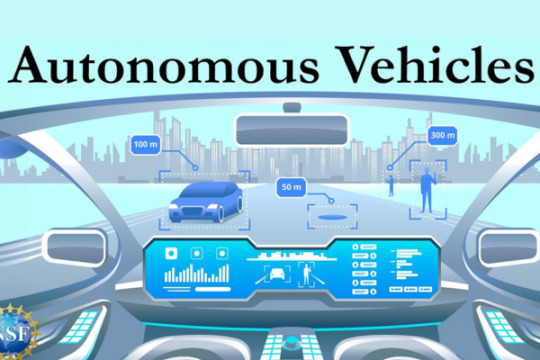
Autonomous vehicle regulations offer several noteworthy benefits that encourage the advancement and prudent use of self-driving cars. These regulations are required to promote innovation and control the unique dangers and challenges associated with autonomous vehicles. The following are a few of the primary benefits of autonomous vehicle legislation:
Autonomous vehicle laws prioritize safety above all else, making sure that self-driving cars follow strict regulations and are at least as safe as human-driven automobiles. These regulations help to reduce the likelihood of accidents caused by malfunctioning autonomous vehicles, defective programming, or other issues.
Consistency and uniformity: Regulations provide a consistent and standard framework for the development and application of autonomous vehicles. They level the playing field for producers by ensuring that all parties adhere to the same operating and safety regulations. In international markets, reliability is vital.
Accountability and Liability Clarity: Responsibility and Liability: To be clear, laws governing autonomous vehicles help establish who is responsible and liable for accidents or issues. By outlining who is responsible—the car’s owner, the manufacturer, or some other party — these rules offer legal clarity and support victims in their pursuit of justice and recompense.
Data collection and analysis: Authorities have access to vital information on the operation of autonomous cars, safety incidents, and near misses thanks to regulations that usually mandate data collection and sharing. By using this knowledge, policy decisions may be made, potential issues can be addressed, and safety standards can be raised.
Public Acceptance and Trust: Transparent regulation can help boost public acceptance of autonomous vehicles. Regulations demonstrate that these automobiles are subject to stringent safety standards and oversight, which can soothe public concerns and encourage further adoption of the technology.
Protection of privacy: Data security and privacy provisions addressing concerns about the collection, archiving, and use of vehicle data may be included in regulations governing autonomous cars. This preserves people’s privacy at a time when data collection is growing.
Boundaries and Innovation: Regulations strike a balance between fostering innovation and setting reasonable boundaries. Innovation within limitations. They create an environment in which companies can develop and employ autonomous technologies while maintaining the highest standards of morality and ethics.
Equity and Accessibility: Regulations can promote equity and accessibility by requiring the development and management of autonomous cars to benefit all members of society. This entails addressing the mobility requirements of the disadvantaged and the disabled.
Regulations for Autonomous Vehicles: Their Drawbacks

While there are numerous benefits to legislation governing autonomous vehicles, it is important to carefully consider the drawbacks and challenges as well. These adverse consequences might include:
Possibility of Overregulation: Excessive, burdensome regulations may stifle creativity and postpone the development and application of driverless vehicles. Finding the perfect balance between advancing technology and upholding safety can be challenging.
Costs related to compliance: It can be costly for both operators and producers of autonomous vehicles to meet regulatory requirements. The costs associated with this could fall on consumers, which would limit their access to self-driving technology.
Absence of Global Standardization: Due to regional and national regulatory differences, manufacturers and operators may face challenges when attempting to implement autonomous vehicles abroad. The absence of global standardization may impede the broad adoption of autonomous technologies.
Rapid technical improvements: Regulations may find it challenging to keep up with the rapid advancements in technology. Outdated legislation can impede innovation since it may not consider the current capabilities and issues related to autonomous vehicles.
Difficulties with Testing and Deployment: Complicated regulatory processes for testing and deploying autonomous cars on public roads can impede development and create bottlenecks, which makes it more difficult for producers to sell their goods.
Problems with Interoperability: Regional variations in regulations may cause problems with interoperability. An autonomous car designed to follow one set of regulations, for example, might not function well in a place where the norms are different.
Enhanced Reporting and Compliance: Manufacturers may be required by regulations to collect and publish data on the performance and safety of their vehicles, which will exacerbate the reporting and compliance requirements. This could lead to higher expenses for the government and industry, as well as additional administrative labor.
Liability and Legal Concerns: While regulations can help determine who is liable, they may not completely resolve the challenges of determining who is at fault and where accountability lies in accidents involving self-driving cars. To handle these exceptional situations, it could be necessary to create even more
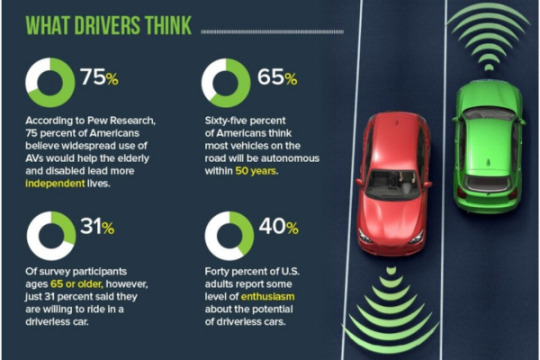
Conclusion:
To sum up, laws governing autonomous vehicles are an essential part of the continuous change taking place in the transportation sector. They have many advantages, like increased safety, accountability, and customer trust, but they also have difficulties and possible negative effects. The remaining issues include handling quickly expanding technology, attaining worldwide standardization, and striking the correct balance between safety and innovation.
Regulations governing autonomous vehicles are being developed dynamically and intricately in response to the rapidly advancing field of self-driving technology as well as shifting societal demands. Good rules should offer a precise structure that guarantees the security of self-driving cars while promoting technological advancement and ease of use. Concerns about liability, privacy, and moral decision-making by autonomous systems should also be covered.
Lawmakers, automakers, and the general public must collaborate to create regulations that encourage the responsible adoption of this revolutionary technology as the use of autonomous vehicles grows. Achieving this balance will be essential to realizing the benefits of autonomous vehicles and resolving associated issues and problems. The realization of autonomous transportation’s bright future will depend on the cooperation of stakeholders and the flexibility of regulatory frameworks in this dynamic environment.
0 notes
Text

Post: The first-ever race between four self-driving cars and a Formula 1 driver just happened in Abu Dhabi... https://www.blaqsbi.com/5QIU
0 notes
Text
Auto Drive- Will It Ever Be a Reality?
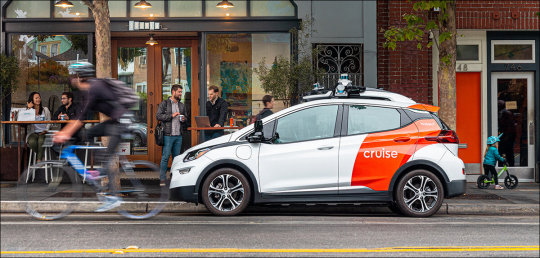
With infrastructure in place, EVs can play a significant role in the future of autonomous vehicles, but there is a long way to go.
Reab More. https://www.sify.com/ai-analytics/auto-drive-will-it-ever-be-a-reality/
#AutoDrive#ElectricVehicle#AutonomousVehicle#Self-drivingVehicle#TeslaCybertruck#AI#ArtificialIntelligence#Autopilot#CruiseControl
0 notes
Text
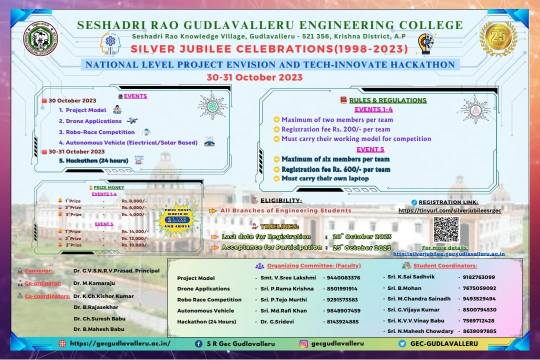
National Level Project Envision and Tech-Innovate Hackathon event on 30-31 October 2023
Registration Link and Rules & Regulations Link are mentioned in brochure
#srgec#gec#gecgudlavalleru#srgudlavalleruengineeringcollege#projectexpo#hackathon#automation#vehicles#silverjubilee#srgecsilverjubilee#srgec2023#projectmodel#droneapplication#roborace#autonomousvehicle#technology
0 notes
Video
youtube
(via Rolls-Royce 103EX: The Future of Luxury Mobility)
#RollsRoyce103EX#Technology#Innovation#ConceptCar#Automotive#Design#FutureTech#FutureOfLuxuryMobility#AutonomousVehicle#LuxuryCar
1 note
·
View note
Text
The Power of Artificial Intelligence: How It's Changing the Game
Artificial Intelligence (AI) has been a buzzword in the technology industry for many years now, but it's only in recent times that we've seen significant advancements in the field.

AI is transforming the way we live and work, and it's becoming an increasingly essential tool in various industries. In this blog post, we'll explore the power of AI and how it's changing the game.AI involves the development of computer systems that can perform tasks that typically require human intelligence, such as understanding natural language, recognizing objects, and making decisions based on data. One of the most significant benefits of AI is that it can process vast amounts of data much faster and more efficiently than humans can. This means that it can help businesses and individuals make more informed decisions based on the available data.AI has a wide range of applications, from healthcare to finance and even entertainment. In healthcare, AI is used for diagnosing diseases and developing personalized treatment plans. In finance, it's used for fraud detection and risk management. In entertainment, AI is used for recommending content based on user preferences.One of the most exciting areas where AI is making a significant impact is in the field of autonomous vehicles. Self-driving cars are becoming increasingly common, and they're set to transform the way we travel. These vehicles use a combination of sensors and AI algorithms to navigate roads and traffic, reducing the risk of accidents and improving traffic flow.AI is also being used to develop chatbots, which are virtual assistants that can help customers with their queries and problems. Chatbots are becoming increasingly popular in the customer service industry, as they can handle simple tasks such as booking appointments or answering frequently asked questions, freeing up customer service agents to handle more complex issues.However, the rise of AI has also raised concerns about the impact on employment. Some experts predict that the increasing use of automation and AI will lead to the elimination of many jobs, particularly in industries such as manufacturing and transportation.In conclusion, the power of AI is transforming the way we live and work. From healthcare to finance and entertainment, AI is making significant strides in various industries, and it's set to continue shaping the future. While there are concerns about the impact on employment, the potential benefits of AI cannot be overlooked. As we continue to embrace AI, it's essential to ensure that it's used ethically and responsibly to maximize its potential for the greater good.
#ArtificialIntelligence#AI#MachineLearning#Automation#DataScience#BigData#AutonomousVehicles#Chatbots#Robotics#TechnologyTrends#DigitalTransformation#SmartTechnology#Industry4.0#Innovation#EthicsAndAI
2 notes
·
View notes
Photo

Système racinaire du @cac_lafermedubuisson. Cartographie générée par le public de l’exposition Le Palais des villes imaginaires via l’installation interactive "Data driven | #SansLesMains_" — #lepalaisdesvillesimaginaires #filipevilasboas L’œuvre met en scène un service fictif de voitures autonomes à disposition des visiteurs et s’intéresse en particulier au contrôle des objets techniques qui glisse progressivement dans l’histoire de la main à la machine. Cette carte dessine les commandes réalisées par le système et donne à voir les liens biologiques et psychiques de la ville avec le reste du monde. Du 26 Mars au 24 Juillet 2022 À #Noisiel — RER A Avec @alainbublex, @nicolasdaubanes_jdp, @louisaraddatz, @capucinevever, @vilasboas.filipe Le cabinet des utopies présente Archigram, Guy Debord, Charles Fourier, Le Corbusier, Yona Friedman, Claude-Nicolas Ledoux, Constant Anton Nieuwenhuys, François Schuiten, Bert Theis et Le Grand Paris des écrivains [ @pavillonarsenal ]. Le Palais des villes imaginaires Commissaire associée : Julie Sicault Maillé Production #LaFermeDuBuisson w/ @michael_de_la_garenne - @lafermedubuisson #artcontemporain #centredart #fermedubuisson #juliesicaultmaillé #art #artlovers #contemporaryart #autonomousvehicles #selfdrivingcar #datadriven #dataart #digitalart #voitureautonome #newmediaart #mediart #artwork #instaart #installationart #conceptualart #juliesicaultmaille #kunst #arte #automobile #caclafermedubuisson #electronicart (at la Ferme du Buisson) https://www.instagram.com/p/CeNfeUgKlUo/?igshid=NGJjMDIxMWI=
#sanslesmains_#lepalaisdesvillesimaginaires#filipevilasboas#noisiel#lafermedubuisson#artcontemporain#centredart#fermedubuisson#juliesicaultmaillé#art#artlovers#contemporaryart#autonomousvehicles#selfdrivingcar#datadriven#dataart#digitalart#voitureautonome#newmediaart#mediart#artwork#instaart#installationart#conceptualart#juliesicaultmaille#kunst#arte#automobile#caclafermedubuisson#electronicart
2 notes
·
View notes
Link
#AAVM#AI#artificialintelligence#AutonomousVehicle#AV#AWS#cablessexcavator#CES2024#CNH#ElectricVehicle#EV#futureconstructionequipment#futureconstructionsites#Futurride#generativeAI#GoogleCloud#GravisRobotics#HDHyundai#HDHyundaiInfracore#HDHyundaiXiteSolution#MinistryofIndustryandMineralResource#NEOM#robotics#smartconstruction#sustainablemobility#unmannedexcavator#X-Wise#Xite#XiteTransformation
0 notes
Text
Different Types of Car Sensors and their Functions
April 11, 2024
by dorleco
with no comment
Others

car sensors
When issues or obstacles arise in your car, an electrical device known as a car sensor monitors them and alerts the driver. These automotive sensors frequently modify the engine to fit the situation. Car sensors are becoming an essential part of a modern car. The car is now smarter than before because its sole goal is to identify any threat to the vehicle and its occupants.
Previously, sensors could only be used by the engine. However, most vehicle operations now rely on a sensor, thanks to technological advancements. Car sensors monitor the car’s oxygen or fuel intake and predict any mechanical issues.
What Purposes Do Car Sensors Serve?
“Sensing” and “monitoring,” as their names suggest, are the main functions of car sensors.
The primary function of automobile sensors is data gathering and transmission to the Electronic Control System (ECS). The ECS uses algorithms to assist people in taking specific actions in a given situation.
These car sensors and ECS translate the physical and chemical change variables into electric signals, which inform the driver of additional tasks.
How do car sensors work?
Think about the human body to gain a basic grasp of the different types of car sensor and their functions.
Our five senses help us remain aware of the environment around us because we are mindful of them. Abrupt changes in our surroundings cause reflexes. Similarly, our body notifies the brain to start the proper reaction when something foreign enters our body or breaks down unexpectedly.
Cars are automotive sensors, just like these sensory organs. They let you know if there’s a problem with any of its interior parts or if something is blocking the way. Computerization and new algorithms have improved the precision of these sensing capabilities in today’s automobiles.
Automobile sensors detect issues and notify the CPU when they appear. The processor will provide the rider with further information by blinking the dashboard or screen lights or by issuing an auditory alert. Moreover, robots can initiate a reflex action in case immediate aid is required.
For instance, the fuel level sensor in your car may tell you how much fuel it has left in it. When the gasoline becomes low enough to need refueling, it will notify you. The fuel level sensor will also alert you if there is unnecessary fuel drainage or insufficient fuel in the tank. Modern cars even have GPS attached to the gasoline level sensor to enhance your driving experience.
Car Sensor Types
In recent years, modern cars have incorporated an increasing number of sensors. Enhancing a car’s detection capabilities ensures a safe and comfortable journey as well as an extended vehicle lifespan.
The modern automobile is equipped with a multitude of sensors. However, not every car has every one of them. Because of this, these 12 essential types of automotive sensors are found in almost every vehicle.
1. Oxygen Sensors

Oxygen sensors, often known as O2 sensors, monitor the oxygen content of vehicle exhaust systems. After receiving this data, the VCU makes the necessary adjustments to the air/fuel mixture to ensure optimal engine performance.
2. Mass Air Flow (MAF) Sensor

If the MAF sensor fails, the vehicle’s VCU won’t know how much fuel to inject into the combustion chamber, which will result in subpar engine performance.
3. Engine Oil Level Sensor

Maintaining an engine’s oil level at the recommended level as instructed by the manufacturer is essential to preventing catastrophic engine damage.
This sensor, which is often found on the side of the oil pan, is what causes the engine oil warning light to show on the dashboard of the majority of cars. If this light comes on, check the oil levels in your engine immediately.
4. Pressure Engine Oil Sensor

The engine oil pressure sensor, which is normally located at the base of the cylinder head, is connected to the engine oil warning light on the dashboard. In certain autos, it could also be related to the check engine warning light.
5. Coolant Temperature Sensor
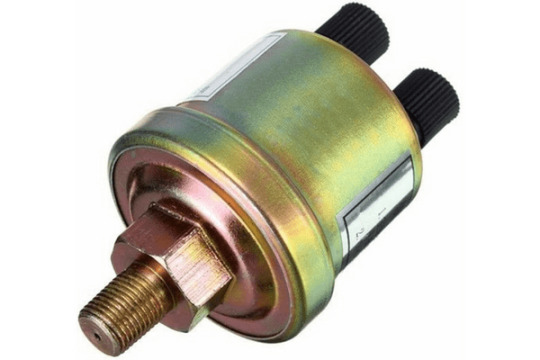
Heat is the enemy of efficiency for anyone with even a cursory understanding of elementary physics. Every modern engine has a robust cooling system, which maintains the engine operating at its optimal temperature for optimal efficiency.
If the coolant temperature goes too high, the sensor sends a signal to the VCU, which causes the dashboard’s coolant temperature warning light to illuminate. If this happens, you should stop immediately to prevent the engine from overheating and perhaps seizing.
6. Coolant Level Sensor

You should only use coolants that the manufacturer has approved to provide optimal cooling and lower the risk of an overheated engine.
7. Air Intake Temperature Sensor
The temperature of the air entering the engine may affect how well the car performs. More oxygen molecules are found in colder air because it is denser, and vice versa.
The air intake temperature sensor is located between the intake filter and the intake manifold, just like the previously described MAF sensor.
When the air intake temperature sensor and MAF sensor are combined in some cars, the VCU can calculate the ideal fuel injection volume to keep the engine running efficiently.
8. Manifold Absolute Pressure (MAP) Sensor

In non-naturally aspirated engines, this sensor is usually located in the intake track or above the intake manifold. An issue with the MAP sensor may result in lower mileage and frequent engine stalling or surging.
9. Boost Pressure Sensor

Boost pressure sensors are only found in cars with forced induction, particularly in turbocharged or supercharged vehicles.
These sensors, which are frequently located inside the intake pipes of engines, could break down and cause the engine to perform less well.
Since the VCU cannot supply enough fuel for the amount of air entering the engine, failing the sensor may also result in difficulties starting the engine.
10. Engine knock sensor

Engine banging can cause serious damage to an engine. Knocking is a 4-stroke engine cycle imbalance that can occur when the air-fuel combination ignites before the ignition phase.
Ignoring a defective knock sensor can cause major harm to an engine by drastically lowering power and efficiency.
11. Air Bag Sensor

When driving carefully, airbag sensors ensure the protection of the occupants in the event of an incident. Airbag sensors are triggered by events like hard stops or high-impact pressure.
After receiving a signal from airbag sensors, the inflator system in your automobile injects nitrogen gas into the airbag. In the case of a side, rear, or front collision, this acts as a cushion.
12. Nox Sensor:

Nitrogen oxide, along with hydrocarbons and carbon monoxide, is a hazardous environmental pollutant. As a result, strict regulations are in place for emissions from vehicles that pose a risk. The composition of a vehicle’s nitrogen oxide emissions is also covered by these laws. Moreover, NOx sensors prevent your car’s exhaust system from being over-exhausted.
In cars, the selective catalytic reduction system (SCR) is adjacent to the NOx sensors.
Conclusion:
In conclusion, the plethora of automobile sensors found in modern vehicles carry out a range of functions vital to the car’s operation, security, and comfort. These sensors are expertly crafted to monitor multiple aspects of the vehicle’s surroundings and functioning, ensuring optimal efficiency and enhancing the overall driving experience.
To optimize efficiency and reduce environmental impact, engine sensors — such as mass airflow, oxygen, and coolant temperature sensors — manage essential components like engine temperature, pollutants, and air-fuel mixture.
Safety sensors like TPMS, ABS, and traction control sensors significantly improve driver safety by detecting wheel slippage, maintaining stability during braking, and monitoring tire pressure for safe handling and a lower probability of collision.
Particulate matter and EGR sensors, among other environmental sensors, are crucial for regulating emissions, ensuring compliance with legal requirements, and lessening the vehicle’s environmental effects.
Driver assistance sensors, including cameras, radars, and ultrasonic sensors, enable advanced driver assistance systems like adaptive cruise control and lane departure warning. These automotive sensors facilitate functions like autonomous driving and collision prevention while also enhancing driver awareness.
Comfort and convenience sensors, including rain, ambient light, and proximity sensors, enhance driver comfort and convenience by automatically adjusting features like interior lighting, parking aids, and windshield wipers depending on external circumstances.
As automotive technology advances, the role that sensors play in enhancing the driving experience will only increase. Together, these sensors form an advanced network that continuously gathers and processes data, providing drivers with information that will usher in a new era of safer, smarter, and ecologically friendly transportation.
1 note
·
View note
Text
Self-Driving Cars and Trucks Market: Navigating the Future of Autonomous Vehicles

Introduction:
According to the study by Next Move Strategy Consulting, the Self-Driving Cars and Trucks Market size is predicted to reach USD 2.62 billion by 2030 with a CAGR of 11.7% by 2030.
In recent years, the concept of self-driving cars and trucks has shifted from the landscape of science fiction to a tangible reality, reshaping the landscape of transportation as we know it. With advancements in artificial intelligence (AI), sensor technology, and connectivity, autonomous vehicles have emerged as a transformative force, promising to revolutionize how we move people and goods from one place to another.
This article explores the burgeoning self-driving cars and trucks market, delving into the technological innovations, market dynamics, regulatory challenges, and societal implications that shape the future of autonomous vehicles.
Request a FREE sample, here: https://www.nextmsc.com/self-driving-cars-and-trucks-market/request-sample
Technological Advancements Driving the Self-Driving Cars and Trucks Market:
The rapid evolution of technology lies at the heart of the self-driving cars and trucks market. At the core of autonomous vehicles are sophisticated AI algorithms that enable them to perceive and interpret their surroundings, make decisions in real-time, and navigate complex environments with precision and efficiency.
One of the key technologies driving the advancement of self-driving cars and trucks is LiDAR (Light Detection and Ranging). LiDAR sensors emit laser pulses to measure distances to objects, creating high-resolution 3D maps of the vehicle's surroundings. Combined with radar, cameras, and GPS, LiDAR enables autonomous vehicles to detect and track other vehicles, pedestrians, and obstacles, allowing them to safely navigate roads and highways.
Furthermore, advancements in machine learning and deep learning algorithms have enhanced the capabilities of autonomous vehicles to recognize and respond to dynamic traffic scenarios. By continuously analyzing vast amounts of data collected from sensors and cameras, self-driving cars and trucks can adapt to changing road conditions, anticipate potential hazards, and make split-second decisions to ensure the safety of passengers and pedestrians.
Market Dynamics and Growth Prospects:
The self-driving cars and trucks market is characterized by rapid innovation, intense competition, and shifting consumer preferences. Major automotive manufacturers, technology firms, and startups are vying for market share, investing billions of dollars in research and development to bring autonomous vehicles to market.
Inquire before buying, here: https://www.nextmsc.com/self-driving-cars-and-trucks-market/inquire-before-buying
One of the primary drivers of growth in the self-driving cars and trucks market is the demand for safer, more efficient transportation solutions. With traditional vehicles plagued by human error, which is a leading cause of accidents on the road, autonomous vehicles offer the promise of significantly reducing the risk of collisions and fatalities. As a result, consumers, fleet operators, and policymakers are increasingly embracing autonomous technology as a means to enhance road safety and improve traffic flow.
Moreover, the potential economic benefits of self-driving cars and trucks are driving widespread adoption across various industries. In the logistics sector, autonomous trucks hold the promise of reducing transportation costs, optimizing delivery routes, and increasing the efficiency of supply chains. Similarly, in the ride-sharing and mobility-as-a-service (MaaS) industry, autonomous vehicles offer the potential to lower operating expenses, improve vehicle utilization rates, and enhance the overall customer experience.
However, despite the immense potential of the self-driving cars and trucks market, several challenges and barriers to adoption remain. Chief among these is the regulatory landscape, which varies significantly from one jurisdiction to another. While some countries and regions have embraced autonomous technology with open arms, others have adopted a more cautious approach, implementing stringent regulations and testing requirements to ensure the safety and reliability of autonomous vehicles.
Furthermore, ethical considerations surrounding autonomous vehicles, such as liability in the event of accidents and the moral implications of algorithmic decision-making, pose complex challenges that must be addressed. Additionally, concerns about data privacy and cybersecurity loom large, as autonomous vehicles rely heavily on interconnected systems and communication networks, raising the specter of potential cyber threats and vulnerabilities.
Societal Implications and Ethical Considerations:
The widespread adoption of self-driving cars and trucks is poised to have far-reaching societal implications, reshaping how we live, work, and interact with our environment. On the one hand, autonomous vehicles hold the promise of greater mobility and accessibility for individuals with disabilities, elderly populations, and underserved communities, enabling them to access essential services and participate more fully in society.
On the other hand, the rise of autonomous vehicles raises questions about the future of employment, as millions of workers employed in transportation-related industries face the prospect of job displacement. Truck drivers, taxi drivers, and delivery personnel are among those most at risk of automation, prompting concerns about unemployment, income inequality, and the need for workforce retraining and reskilling programs.
Moreover, the ethical considerations surrounding autonomous vehicles are complex and multifaceted, touching on issues of human dignity, justice, and accountability. In the event of an unavoidable accident, how should self-driving cars prioritize the safety of passengers versus pedestrians? Who should bear responsibility for accidents caused by autonomous vehicles: the manufacturer, the software developer, or the vehicle owner?
These are just a few of the ethical dilemmas that policymakers, ethicists, and technologists grapple with as autonomous technology continues to advance. As autonomous vehicles become increasingly integrated into our daily lives, it is imperative that we address these ethical concerns thoughtfully and proactively, ensuring that the benefits of autonomous technology are equitably distributed and that the rights and interests of all stakeholders are safeguarded.
Conclusion:
In conclusion, the self-driving cars and trucks market represents a paradigm shift in transportation, ushering in a new era of mobility that promises to enhance safety, efficiency, and accessibility for individuals and businesses around the world. With advancements in technology driving rapid innovation and growth, the future of autonomous vehicles is brimming with potential.
However, realizing this vision requires navigating a complex landscape of technological, regulatory, and ethical challenges. By collaborating across industries, disciplines, and borders, stakeholders can work together to address these challenges, ensuring that autonomous vehicles fulfill their promise of a safer, smarter, and more sustainable future for all.
As we navigate the future of autonomous vehicles, let us seize the opportunity to shape a transportation system that reflects our values, priorities, and aspirations. By harnessing the power of innovation and collective action, we can build a world where self-driving cars and trucks pave the way towards a brighter, more inclusive future for generations to come.
#SelfDrivingCars#AutonomousVehicles#DriverlessCars#SelfDrivingTrucks#FutureOfTransport#SmartMobility#AutomotiveandTransportation#MarketTrends#IndustryAnalysis
0 notes
Text
The Robotics Revolution All Around We Don't See

Despite being romanticised as futuristic; robots are indispensable in our lives, making it better and exploring outer worlds like the Moon writes Satyen.
Read More. https://www.sify.com/ai-analytics/the-robotics-revolution-all-around-we-dont-see/
#RoboticsRevolution#AI#ArtificialIntelligence#Robot#Automation#Chornobyl#AutonomousVehicle#Self-DrivingCars
0 notes
Text
Rolls-Royce 103EX: The Future of Luxury Mobility

View On WordPress
#Automotive#AutonomousVehicle#ConceptCar#Future#FutureOfLuxuryMobility#FutureTech#Innovation#LuxuryCar#RollsRoyce103EX#Technology
1 note
·
View note
Link
Apple iPhone 16 display could start production next month: report
#InternetofThingsIoT#AppleiPhoneleak#AppleiPhone#Apple#5G#AppleiPhonepriceinIndia#ApplepredictionsRossYoung#display#AutonomousVehicles#Blockchain#AppleiPhoneshowsRossYoung
0 notes
Text
10 Groundbreaking Innovations Shaping Our Future: Brace Yourself for the Journey Ahead

Prepare to embark on an exhilarating exploration of tomorrow! We're delving into ten revolutionary technologies that are swiftly reshaping our world. From awe-inspiring artificial intelligence to sustainable solutions that mend the planet, these breakthroughs hold the power to redefine not only our daily routines but also the monumental challenges confronting humanity. So, fuel your curiosity and brace yourself for an astonishing voyage!
Artificial Intelligence (AI): Envision machines capable of learning, reasoning, and even innovating! AI is forging new frontiers across various domains, from enhancing healthcare diagnostics to powering autonomous vehicles. As AI advances, it heralds a paradigm shift in industries, streamlining operations, and even fostering collaboration in creativity!
Internet of Things (IoT): Welcome to a realm where your refrigerator restocks groceries and your sneakers monitor fitness milestones! The IoT seamlessly connects mundane objects to the internet, enabling data collection and exchange. This interconnected ecosystem promises heightened efficiency, automation, and convenience in our daily lives.
Blockchain Technology: Picture a digital ledger impervious to manipulation. That's blockchain! Beyond fueling cryptocurrencies, this groundbreaking technology holds vast potential, from fortifying voting systems to fostering transparent supply chains.
Quantum Computing: Brace for a computational revolution like no other! Quantum computers harness the peculiarities of quantum mechanics to tackle problems beyond the scope of today's most potent supercomputers. This breakthrough could catalyze advancements in medicine, materials science, and AI.
Biotechnology and Gene Editing: From unraveling the human genome to crafting life-saving medications, biotechnology is making significant strides. Now, gene-editing tools like CRISPR are taking the spotlight, offering hope for treating and eradicating genetic diseases.
Augmented Reality (AR) and Virtual Reality (VR): Prepare to blur the boundaries between reality and the virtual realm! AR overlays digital elements onto the physical world, while VR immerses users in entirely computer-generated environments. These technologies are poised to revolutionize gaming, education, and healthcare.
Renewable Energy Technologies: Solar, wind, and other renewable energy sources are transitioning from the sidelines to the forefront. As technology advances and costs plummet, renewables are poised to emerge as the primary source of clean energy, combating climate change and fostering sustainability.
Autonomous Vehicles: Self-driving cars are no longer the stuff of science fiction! Breakthroughs in AI and sensor technology are paving the way for a future where vehicles navigate roads autonomously, revolutionizing transportation safety and accessibility.
Robotics and Automation: Robots are transcending factory confines, venturing into realms such as surgery, space exploration, and household assistance. As robotics evolves, anticipate the emergence of even more intelligent and adaptable robots playing pivotal roles in our lives.
Advanced Materials Science: From self-healing concrete to ultralightweight yet exceptionally robust composites, advancements in materials science are pushing the boundaries of possibility. These novel materials have the potential to revolutionize industries ranging from construction to aerospace engineering.
This is merely a glimpse of the remarkable technological advancements shaping our future. As these innovations continue to evolve and intersect, we stand on the brink of an era teeming with thrilling opportunities. Fasten your seatbelt and brace yourself for an extraordinary journey.
#Innovation#FutureTech#AI#IoT#Blockchain#QuantumComputing#Biotechnology#AR#VR#RenewableEnergy#AutonomousVehicles#Robotics#MaterialsScience
0 notes
Text

Post: A wrestling match over who should control robotaxis is playing out in California | TechCrunch https://www.blaqsbi.com/5Qul
0 notes